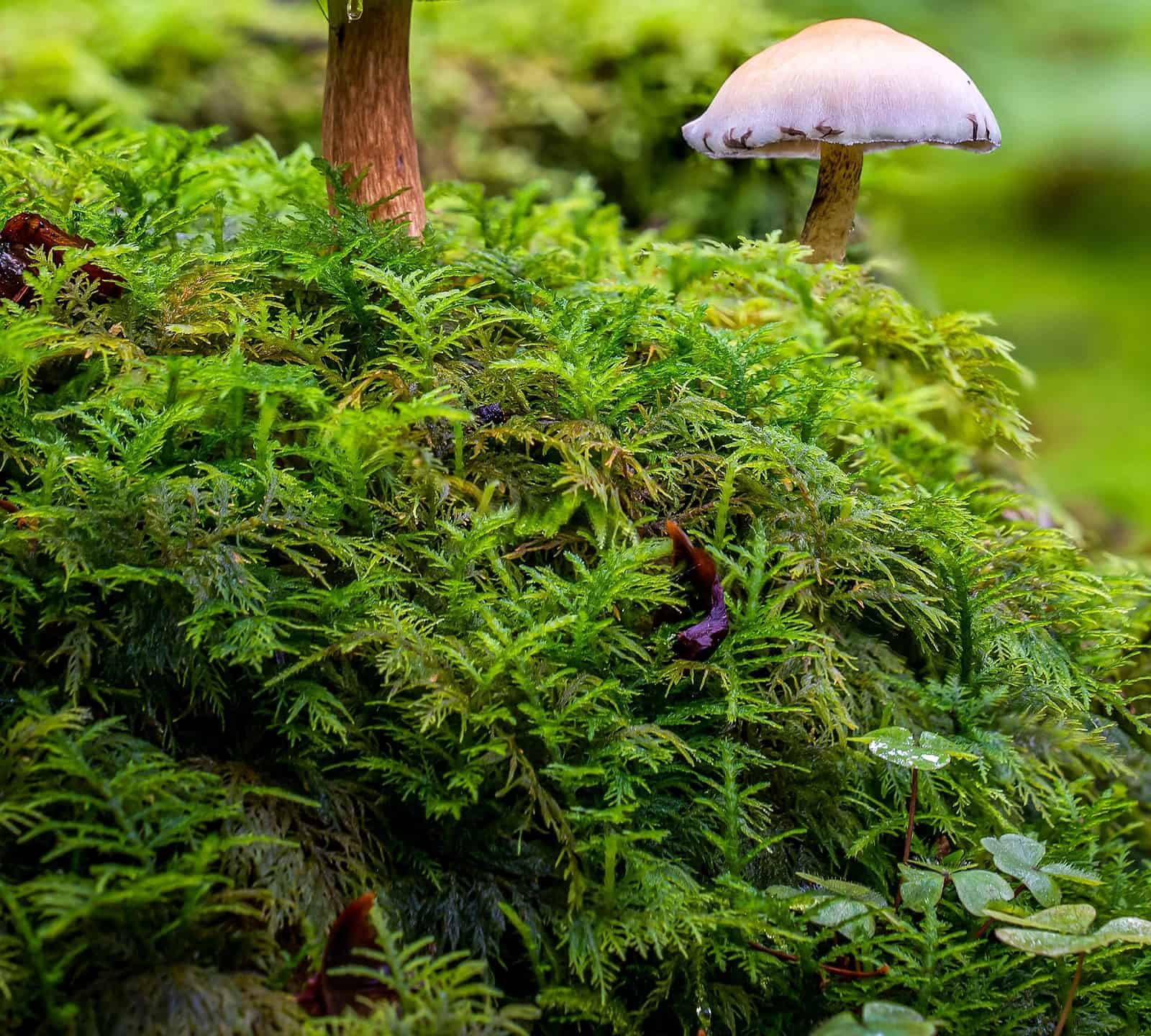The right mushroom season will heavily depend on the type of mushroom and your locale when you go foraging. Some locations have long seasons where mushrooms are plentiful for many months, while others will have very specific months when you’ll find a given species, another month for another species, and so on. So, let’s take a look at the best month for mushroom hunting in your basic region.
Remember as we look, that we’re taking in a bird’s eye view of the best times to find wild, edible mushrooms in your area and around the world.
What to Bring When You Go Foraging

Some beautiful chanterelles ready for harvest.
©Grusho Anna/Shutterstock.com
Before you head out to find the mushrooms of your dreams, let’s talk gear.
- Bring along your phone with a writing app or a notebook to take notes
- Magnifying glasses are your friend – they can help you determine if the species is safe or not
- Kitchen shears, garden shears, or a knife for cutting mushrooms
- A basket or pail for gathering your fungi in
- GPS-enabled phone – it’s easy to get lost if you leave the trail looking for that perfect shroom!
- Water-proof clothing and boots to keep dry while you’re mucking about in wet areas where mushrooms thrive.
Mushroom Season by Locale
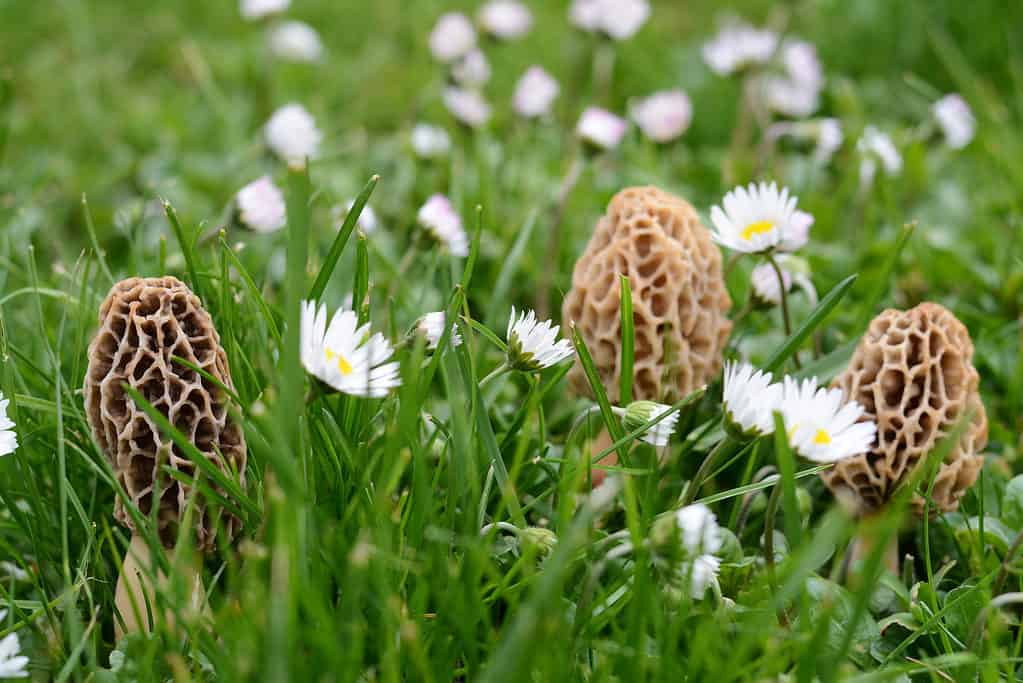
Morel mushrooms growing among the flowers
©milart/Shutterstock.com
Mushroom hunting very definitely has seasons associated with locations. For the sake of this article, we’ll look at four larger regions with the basic top months for finding the most popular edible fungi in them.
Best Month for Mushroom Hunting in North America

It’s best to cut the base off once you have made proper ID so that you don’t get dirt all over other mushrooms.
©catalina.m/Shutterstock.com
Many of the best edible mushrooms may be found throughout the United States. Be sure to check up on each species before foraging, to ensure they grow in your area.
- Chanterelles – East coast May to October, west coast September to February
- Lion’s Mane Mushrooms – Late summer to fall, over winter and into spring in warmer climates
- Porcini Mushrooms – Species dependent, Summer to Fall and even sometimes winter
- Portobello Mushrooms – Year-round in the grocery store
- Cremini Mushrooms – Year round in the grocery store
- Oyster Mushrooms – Species dependent, but pretty much year round.
- Morels – Early-March to late June
Be sure to understand if the species you’re looking for grows East or West coast, in temperate or humid climates, and what species of trees they love to grow near.
Best Month for Mushroom Hunting in Australia
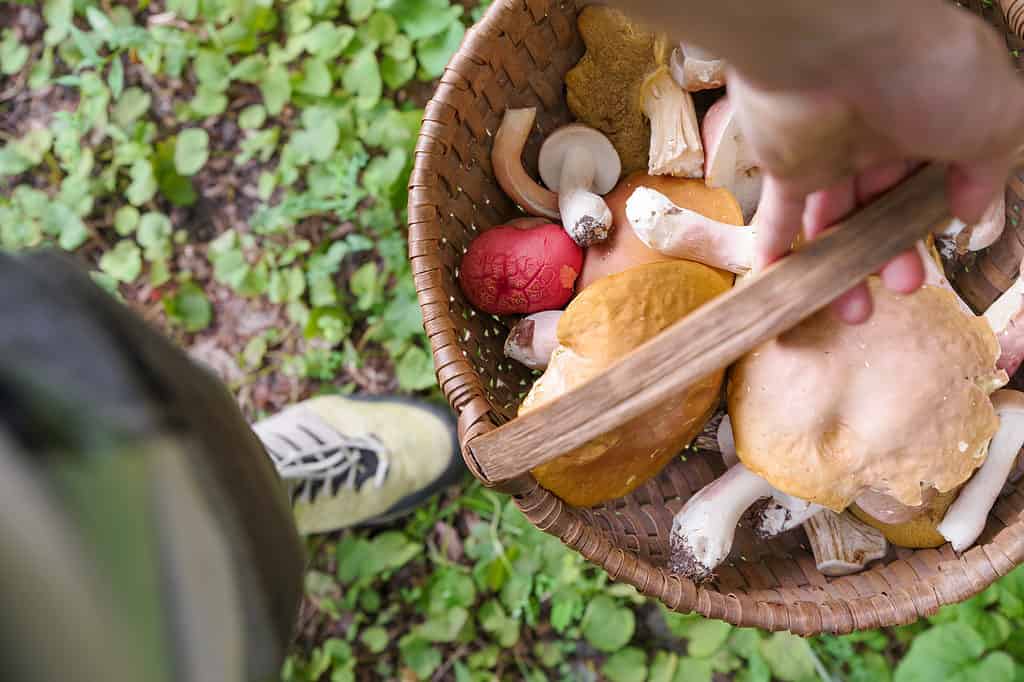
Always bring a basket along for collecting your mushrooms, but it is not best practice to mix a bunch of different species together.
©J.Pecora/Shutterstock.com
Many edible mushrooms species grow natively or have been transplanted into Australian territories.
Note that seasons listed reflect local seasons (Australian). Summer is December through February, autumn is March through May, winter runs from June to August, and September through November are the spring months.
- Field or Horse Mushrooms – Summer through autumn
- Slippery Jack Mushrooms – February to May
- Morels – February to May
- Saffron Milk Cap Mushrooms – February to August
- Turkey Tail Mushrooms – Autumn to late winter
- Beef Steak Fungus – Late summer into autumn
- Wood Blewit – Autumn and winter
- Oyster Mushrooms – Autumn
- Enoki or Velvet Shank Mushrooms – Autumn through winter
- Porcini Mushrooms – Autumn
- Wood Ear Mushrooms – Mid-autumn to early winter, again in early spring
Best Month For Mushroom Hunting in Europe and the UK

Chantarelles are a popular edible mushroom to forage around the world.
©Mathew Shawn Turner/Shutterstock.com
In Europe, there are many popular edible mushrooms to forage for. There are far more than we could ever list, but here are some of the top picks for foragers.
- St. George’s Mushrooms – April to May
- Morels – April to May
- Fairy Ring Champignons – April to August
- Chicken of the Woods – July to August
- Puffball Mushrooms – July to August
- Hen of the Woods – July to October
- Beef Steak Fungus – August to October
- Charcoal Burner – August to November
- Hedgehog Fungus – August to November
- Honey Fungus – August to November
- Oyster Mushrooms – Year-round
- Wood Ear Mushrooms – Year-round
Best Month for Mushroom Hunting in Asia

Maitake mushrooms growing in the wild
©puttography/Shutterstock.com
There are many, many varieties of mushrooms in Asia, both wild and cultivated. The best wild mushrooms can be found as below, many of them specifically Japanese.
- Shiitake Mushrooms – Spring and autumn
- Enoki Mushrooms – Late autumn through winter
- Wood Ear Mushrooms – Mid-autumn to early winter, again in early spring
- Oyster Mushrooms – October to April
- Maitake Mushrooms – August through November
- Eryngii or King Oyster Mushrooms – Year-round
- Matsutake Mushrooms – Autumn
- Nameko Mushrooms – Autumn through winter
- Shimeji or Beech Mushrooms – Autumn
Tips for Mushroom Foraging
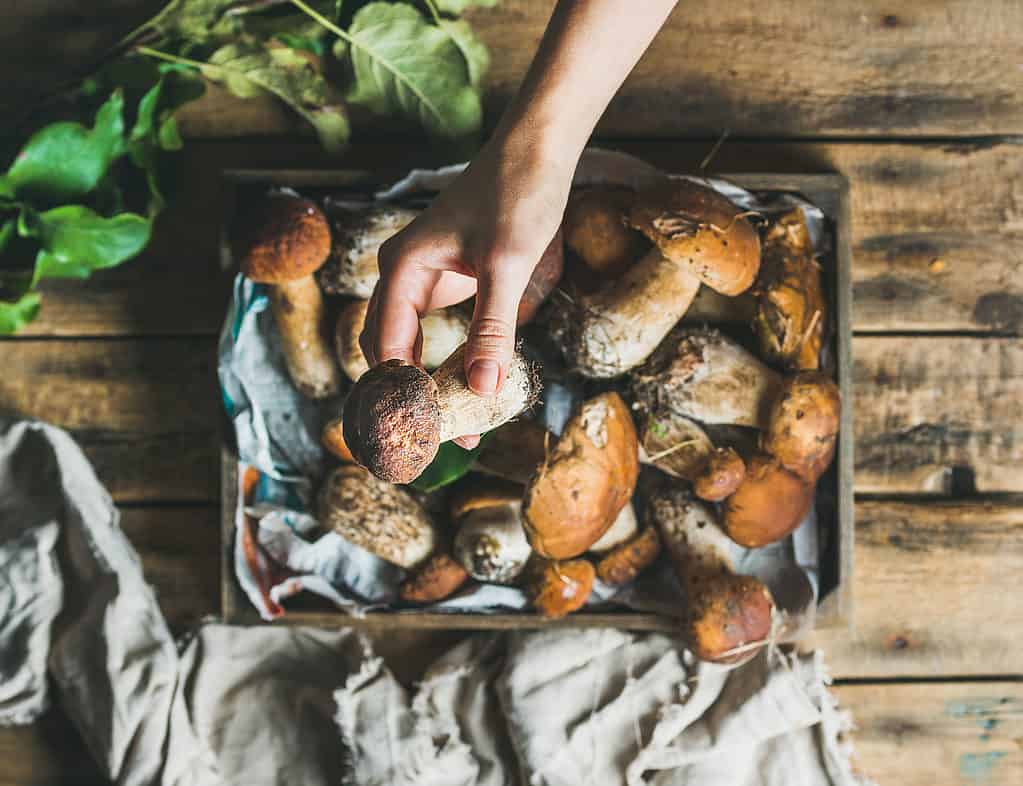
Edible wild mushrooms always add some unique flair to meals.
©Foxys Forest Manufacture/Shutterstock.com
Before we share the other tips, the biggest thing to be aware of as you forage for mushrooms is the need to properly identify the fungi you’re plucking and bringing home. Some mushrooms look almost exactly like others, often with one variety being perfectly tasty and healthy and the other variety being toxic and potentially even lethal, if not dealt with immediately.
Because of this, it’s important to know what you’re doing as you forage and learn from a skilled mycologist (mushroom expert) who can help you identify the differences between look-alike mushrooms. Better yet, bring a mycologist along as you forage or bring all your mushrooms to the expert before preparing them for eating.
Other tips for mushroom foraging follow.
Apps and Books
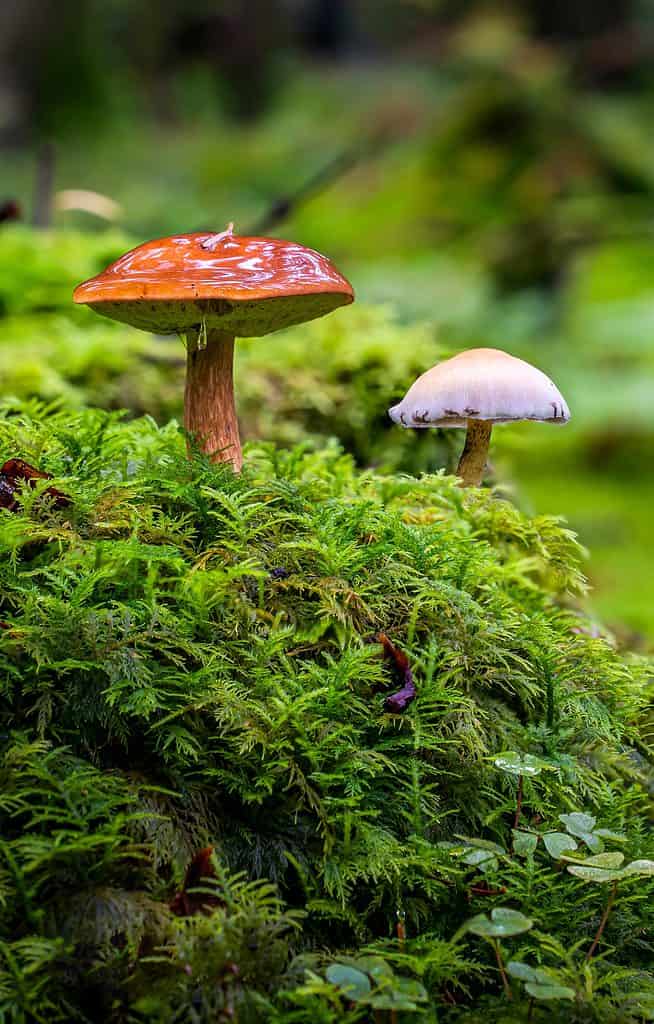
Wild mushrooms growing among moss
©Shairaa/Shutterstock.com
Since not all of us know mycologists or have them at the ready to accompany us on our foraging outings, there are, thankfully, apps(although incorrect a lot of the time) and books that can help us identify mushrooms more safely. One such app is Wild Edibles from Apple or Book of Mushrooms for Android.
Look For Mushrooms After Heavy Rains
Since mushrooms love moist, damp conditions, they’ll be found most easily right after there’s been a good downpour from the heavens. They pop up and grow quickly in rainy seasons or after heavy rain conditions post-drought. Hit up swampy spots along trails, mossy patches, and other locales that seem to collect moisture for best results.
Know Which Fungi Species Grow in Your Area
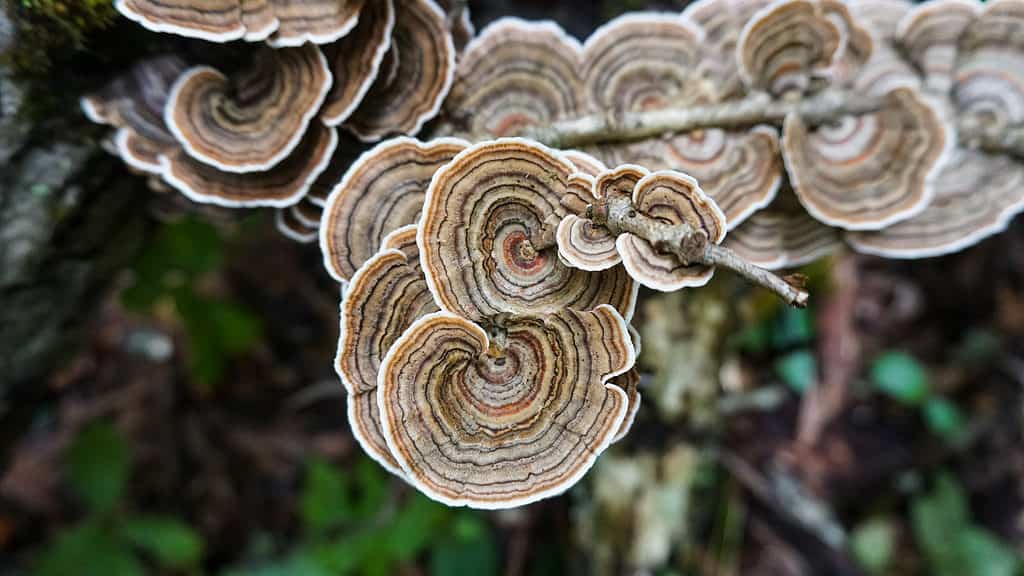
You can easily see where the Turkey Tail Fungus gets its name
©James Aloysius Mahan V/Shutterstock.com
It might not seem that important, but knowing which species grow in your area can really help you out as you go foraging. Since different species have different favored growing conditions and locations, knowing the species can help you find them more easily.
Find the Right Trees and Fan Outward
Mushrooms have favorite tree species in many cases, and pop up around their roots, on dead trunks, and otherwise nearby these specific species. Morels, for example, love elms and apple trees. Beech mushrooms love – you guessed it – beech trees.
Some people say “don’t Pull Mushrooms Out – Cut Them” or vice-versa
This has been proven to just be an old wives tale, so don’t worry about it. You may want to cut the base off though once you have made positive ID, just do you do not get dirt all over the other mushrooms in your basket.
Ask Questions and Take Pictures
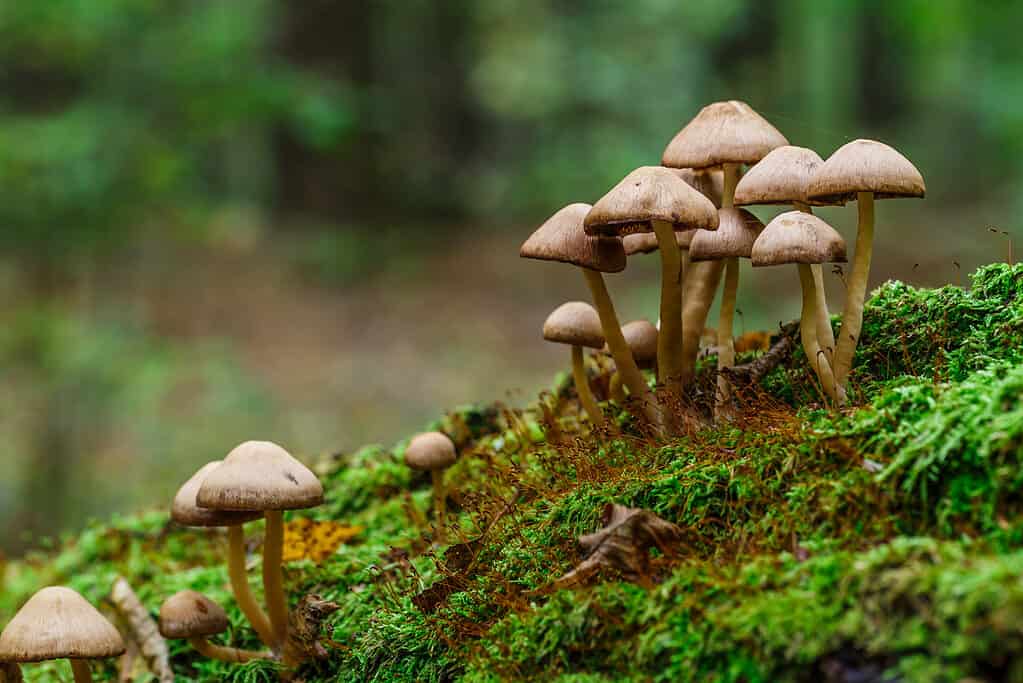
Don’t be afraid to grab some pics, but know that a lot of times pics of the undersides are very important.
©Bukhta Yurii/Shutterstock.com
Because identifying mushrooms can get tricky (and dangerous if done poorly), it’s important to be humble as you do your foraging. Take pictures of the mushrooms you’re not as familiar with and upload them to identification groups and ask the experts your questions. In some areas of the world you can even take them to a pharmacy for proper identification.
Join a Foraging Club
Chances are, if you’re into foraging mushrooms in your area, other folks are, too. Look online on Facebook, Meetup, and similar social sites to see what clubs are in your area. The North American Mycological Association has a great list of official clubs on their website. If there aren’t any local to you, look wider for a non-location specific club. You’ll learn a ton, make new friends, and reduce your chances of picking and eating the wrong mushrooms.
Start small and easy
Finally, when you go out foraging, just look for one or two kinds of mushroom – not all the types. Starting with a couple specific species that you can learn really well, research look-alikes on, know how to prepare, and more, will help you build a database over time, and maybe even lead you to being an expert someday.
Up Next:
- Can Dogs Eat Mushrooms? What are the Risks?
- 8 Different Types of Poisonous Mushrooms You Should Avoid
- Puffball Mushrooms: A Complete Guide
- 10 Wild Mushrooms Found in Spring
The information presented on or through the Website is made available solely for general informational purposes. We do not warrant the accuracy, completeness, or usefulness of this information. Any reliance you place on such information is strictly at your own risk. We disclaim all liability and responsibility arising from any reliance placed on such materials by you or any other visitor to the Website, or by anyone who may be informed of any of its contents. None of the statements or claims on the Website should be taken as medical advice, health advice, or as confirmation that a plant, fungus, or other item is safe for consumption or will provide any health benefits. Anyone considering the health benefits of particular plant, fungus, or other item should first consult with a doctor or other medical professional. The statements made within this Website have not been evaluated by the Food and Drug Administration. These statements are not intended to diagnose, treat, cure or prevent any disease.
Thank you for reading! Have some feedback for us? Contact the AZ Animals editorial team.

